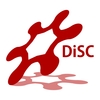Synthesis, reactivity and catalysis
Synthesis and characterization of homogeneous/heterogeneous catalysts; coordination chemistry; organic synthesis, electrosynthesis.
Listed here below you can check the groups developing this research area's activities.
Applied Organometallic Chemistry
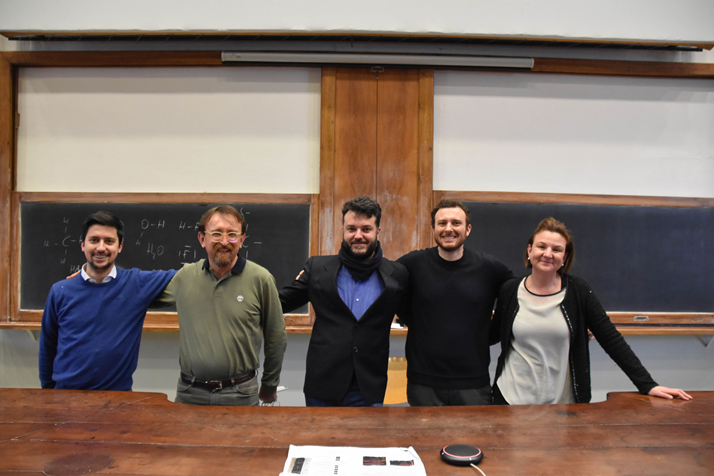
Prof. Alessandro Aliprandi (alessandro.aliprandi@unipd.it); Dr. Marco Baron (marco.baron@unipd.it); Prof. Andrea Biffis (andrea.biffis@unipd.it); Dr. Thomas Scattolin (thomas.scattolin@unipd.it); Prof. Cristina Tubaro (cristina.tubaro@unipd.it);
The group activity focuses on the design, synthesis, characterization and reactivity of selected classes of organometallic compounds with potential application as catalysts, as bioactive molecules or as active components for advanced materials and devices (luminescent devices, sensors, liquid crystals). The main target are late transition metal complexes with N-heterocyclic carbene ligands (NHCs). The structure and properties of the carbene ligands are matched to the metal centre to yield complexes with the desired properties. Ongoing research involves catalysts for C-H functionalizations and CO2 valorization, functional complexes for cooperative catalysis or improved bioactivity, as well as NHC-stabilized molecular gold clusters. We also study the luminescent properties and self-assembly behaviours of organometallic compounds and their application in electrochemiluminescence and chemiluminescence.
- Dinuclear gold(I) complexes with N-phosphanyl, N-heterocyclic carbene ligands: synthetic strategies, luminescence properties and anticancer activity, Dalton Trans., 2021, 50, 13554 - 13560.
- Solvent‐Driven Supramolecular Wrapping of Self‐Assembled Structures, Angew. Chem. Int. Ed., 2021, 60, 5407-5413.
- Palladium(II)-η3-allyl complexes bearing N-trifluoromethyl N-heterocyclic carbenes: a new generation of anticancer agents that restrain the growth of high-grade serous ovarian cancer tumoroids, Chem. Eur. J., 2020, 26, 11868 - 11876.
- Novel Iridium complexes with N-heterocyclic dicarbene ligands in light-driven water oxidation catalysis: photon management, ligand effect and catalyst evolution, DaltonTrans., 2020, 49, 2696 - 2705.
- Single-Step Synthesis of Dinuclear Neutral Gold(I) Complexes with Bridging Di(N-heterocyclic carbene) Ligands and Their Catalytic Performance in Cross Coupling Reactions and Alkyne Hydroamination, Organometallics 2018, 37, 4213-4223.
Bio Organic Chemistry
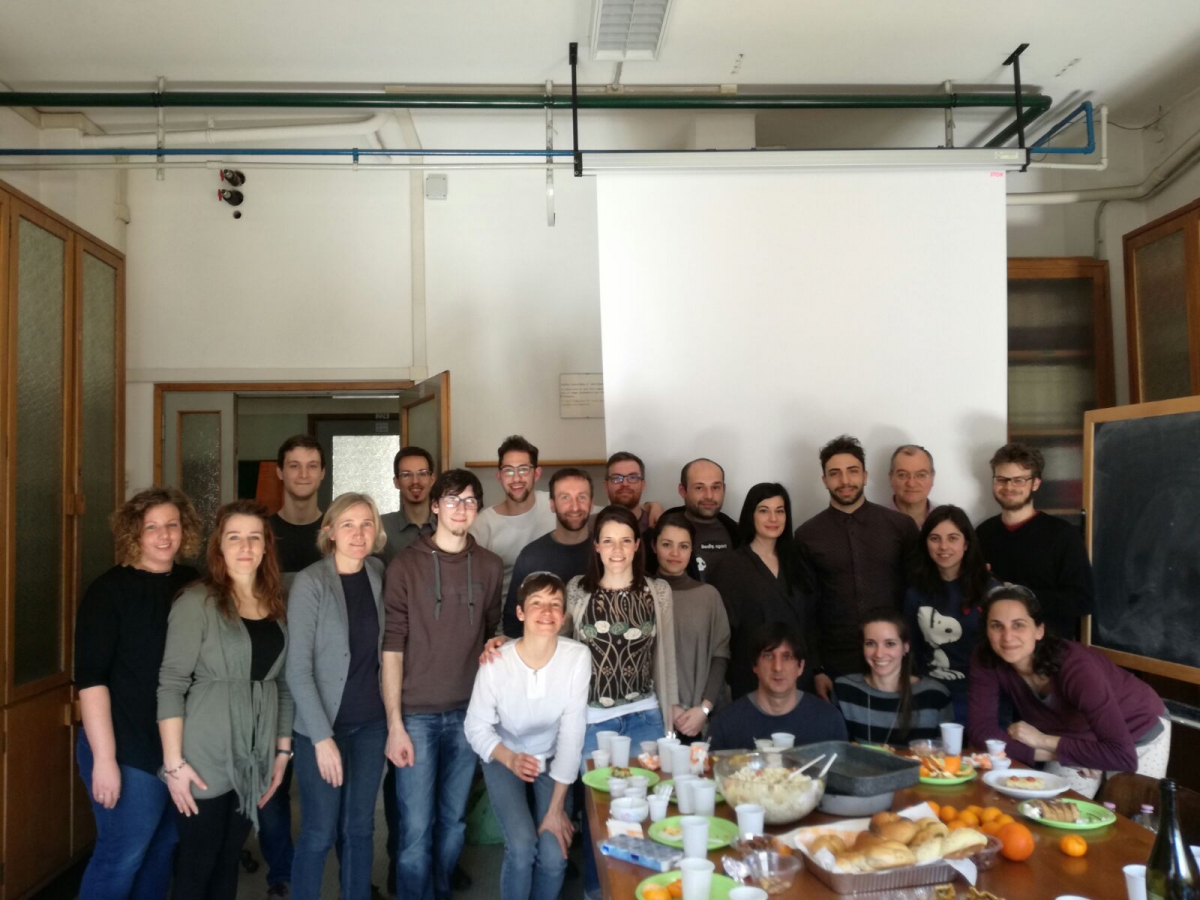
Dr. Barbara Biondi (barbara.biondi@unipd.it); Prof. Marta De Zotti (marta.dezotti@unipd.it); Prof. Fernando Formaggio (fernando.formaggio@unipd.it); Prof. Marina Gobbo (marina.gobbo@unipd.it); Prof. Alessandro Moretto (alessandro.moretto.1@unipd.it); Prof. Cristina Peggion (cristina.peggion@unipd.it)
The Bio Organic Chemistry group synthesizes and studies peptides of different origin and particularly those containing Cα,α-dialkyl amino acids.
The group is engaged in the following research lines:
- synthesis, conformation, mechanism of action and bioactivity (antibacterial and antitumor) of peptides and naturally-occurring peptaibiotics;
- antimicrobial photodynamic therapy;
- textiles functionalized with antibacterial peptides for biomedical applications;
- peptide nanotechnology: peptido-rotaxanes, peptide-decorated metal nanoparticles, self-assembled peptide polymers;
- synthesis and conformation of peptides with well-defined 3D-structures;
- peptide helices as rigid structural elements for spectroscopic studies and for electron transfer and photovoltaic applications.
- Protection against proteolysis of a cell targeting peptide on gold nanostructure, Nanoscale, 2021, 13, 10544-10554.
- Targeting Oncogenic Src Homology 2 Domain-Containing Phosphatase 2 (SHP2) by Inhibiting Its Protein-Protein Interactions, J. Med. Chem., 2021, 64, 15973-15990.
- Photoresponsive Prion-Mimic Foldamer to Induce Controlled Protein Aggregation, Angew. Chem. Int. Ed., 2021, 60, 5173-5178.
- Targeted Amino Acid Substitutions in a Trichoderma Peptaibol Confer Activity against Fungal Plant Pathogens and Protect Host Tissues from Botrytis cinerea Infection, Int. J. Mol. Sci., 2020, 21, art. N. 7521
- Sustainable, Site-Specific Linkage of Antimicrobial Peptides to Cotton Textiles, Macromol. Biosci., 2020, 20, art. N. 2000199.
updated April 26th, 2022
Electrocatalysis and Applied Electrochemistry
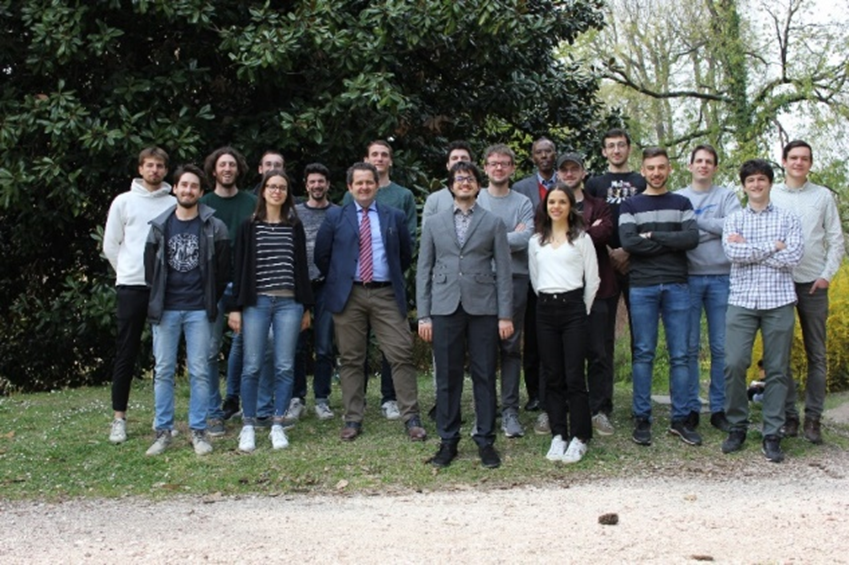
Prof. Abdirisak Ahmed Isse (abdirisak.ahmedisse@unipd.it); Prof. Christian Durante (christian.durante@unipd.it); Dr. Marco Fantin (marco.fantin@unipd.it)
The research group applies electrochemical methods to study chemical problems in various fields such as electrochemical surface treatment, (electro)catalysis, and environmental electrochemistry. The research activity is centered in molecular electrochemistry with particular attention to the study of mechanisms of electrochemical processes, the development of eco-friendly electrosynthesis and electrocatalytic materials and/or electrocatalytic processes. The main topics of research activity of the group are:
-Development of electrocatalytic materials
-Electrochemical activation of small molecules
-Electrochemical approaches to controlled radical polymerization
-Electrochemical surface treatment (electropolishing, electrodeposition)
Daniel, G.; Zhang, Y.; Lanzalaco, S.; Brombin, F.; Kosmala, T.; Granozzi, G.; Wang, A.; Brillas, E.; Sirés, I.; Durante, C. Chitosan-derived nitrogen-doped carbon electrocatalyst for a sustainable upgrade of oxygen reduction to hydrogen peroxide in UV-assisted electro-fenton water treatment. ACS Sustain. Chem. Eng. 2020, 8, 14425–14440.
- Lorandi, F.; Fantin, M.; Wang, Y.; Isse, A.A.; Gennaro, A.; Matyjaszewski, K. Atom transfer radical polymerization of acrylic and methacrylic acids: preparation of acidic polymers with various architectures, ACS Macro Letters, 2020, 9, 693-699.
- Mazzucato, M.; Daniel, G.; Mehmood, A.; Kosmala, T.; Granozzi, G.; Kucernak, A.; Durante, C. Effects of the induced micro- and mesoporosity on the single site density and turn over frequency of Fe-N-C carbon electrodes for the oxygen reduction reaction. Appl. Catal. B Environ. 2021, 291, 120068–120083.
- Grecchi, S.; Arnaboldi, S.; Isse, A.A.; D’Aloi, C.; Gennaro, A.; Mussini, P.R. Electrocatalytic reduction of bromothiophenes vs bromobenzenes on gold and silver electrodes: enhancement from S specific adsorption and modulation from substituent effects, Electrochim. Acta, 2022, 403, 139563
updated April 26th, 2022
Hybrid molecules and materials - HyMolMat
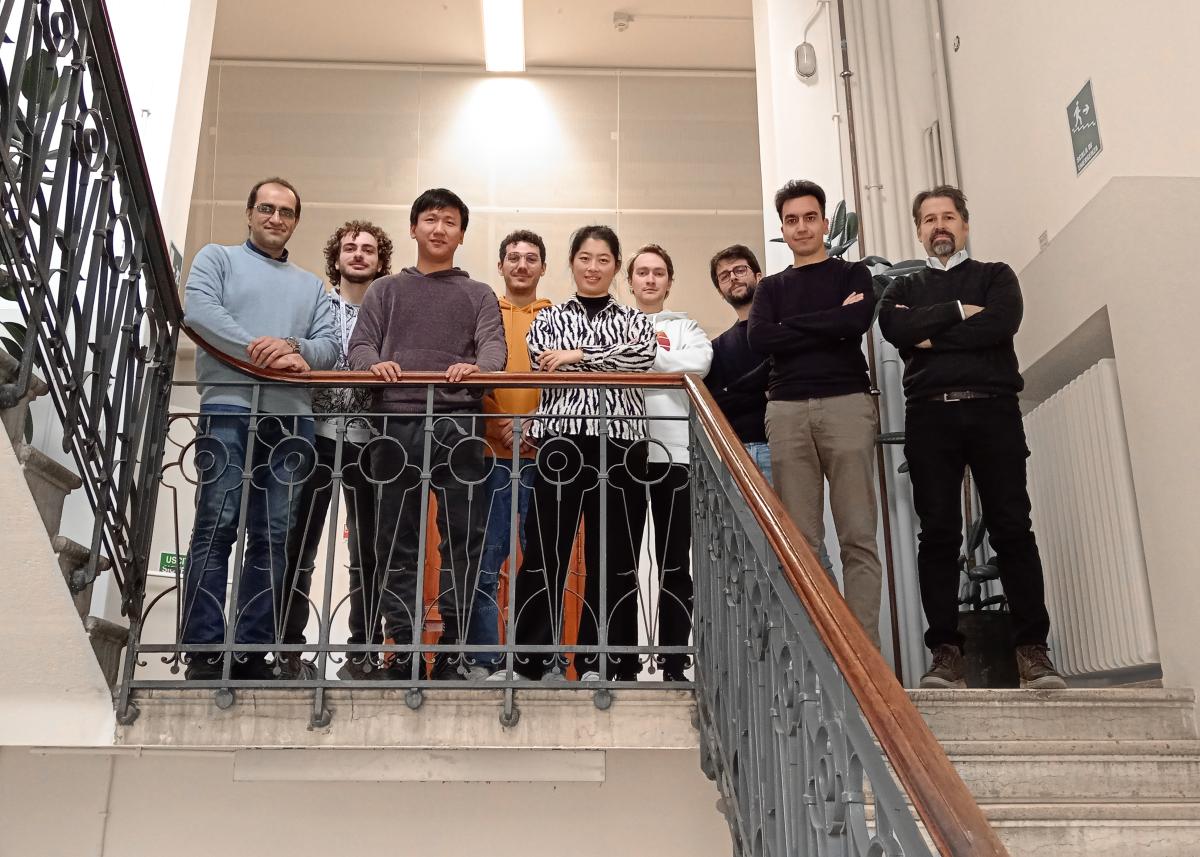
The research activities of the group are focused on the design, synthesis, and characterization of hybrid organic-inorganic compounds:
1. Metal complexes and molecular compounds are developed for applications in biomimetic catalysis and nanomedicine. Specifically, polyoxometalates (tungstates, molybdates, and vanadates) are functionalized with peptides or other organic moieties to confer recognition capabilities towards biological targets. Spectroscopic techniques (NMR, FT-IR, UV-vis, fluorimetry, circular dichroism), cyclic voltammetry, and dynamic light scattering are employed to investigate the behavior of these compounds in solution.
2. Composite materials incorporating nanomaterials (such as halloysite nanotubes, nanocellulose, and metal-organic frameworks) within polymeric matrices are developed. Whenever possible, starting materials are sourced from waste materials (e.g., textiles). These novel materials are functionalized with catalytic units to foster green chemical transformations. Electron microscopies (TEM, SEM), Thermal characterizations (TGA, DSC), surface analysis (XRD, Raman, Z-potential) are applied for their characterization, while HPLC, GC, NMR are used to monitor their activity.
References
1) Bortolus, M., Kotynia, A., Saielli, G., Ruzza, P., Di Valentin, M., Carraro, M., Brasuń, J. Detailed investigation of the binding abilities of the heterodomain of a multiHis cyclopeptide toward Cu(II) ions (2024) J. Pept. Sci. DOI: 10.1002/psc.3568
2) Yu, J., Boudjelida, S., Galiano, F., Figoli, A., Bonchio, M., Carraro, M.Porous Polymeric Membranes Doped with Halloysite Nanotubes and Oxygenic Polyoxometalates (2022) Adv. Mater. Interf., 9 (11), art. no. 2102152.
3) Yu, J., Niedenthal, W., Smarsly, B.M., Natile, M.M., Huang, Y., Carraro, M. Au nanoparticles supported on piranha etched halloysite nanotubes for highly efficient heterogeneous catalysis (2021) Appl. Surf. Sci., 546, art. no. 149100.
4) Tagliavini, V., Honisch, C., Serratì, S., Azzariti, A., Bonchio, M., Ruzza, P., Carraro, Enhancing the biological activity of polyoxometalate-peptide nano-fibrils by spacer design (2021) RSC Adv., 11 (9), pp. 4952-4957.
Interfaces & Nanomaterials for Catalysis (INCAT)
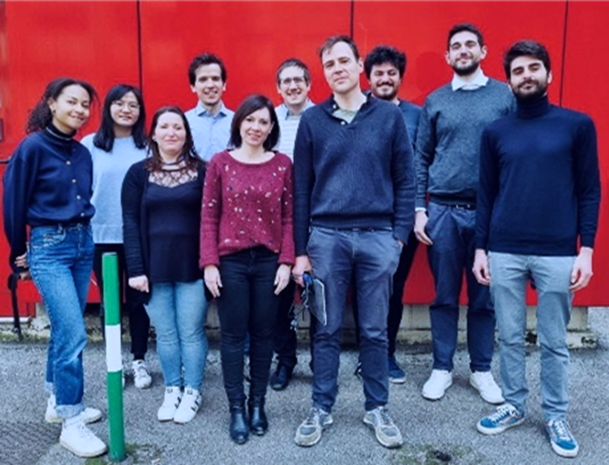
Prof. Stefano Agnoli (stefano.agnoli@unipd.it); Prof. Laura Calvillo (laura.calvillolamana@unipd.it); Dr. Francesca Arcudi (francesca.arcudi@unipd.it); Dr. Mattia Cattelan (mattia.cattelan@unipd.it);
The Interfaces & Nanomaterials for Catalysis (INCAT) group focuses on the rational design of innovative materials for applications in sustainable electro- thermo- and photo- catalysis. We follow a knowledge-driven approach based on the combination of advanced synthesis methods (chemical vapor deposition, solvothermal synthesis, aerosol process etc.) and sophisticated characterization techniques (electron spectroscopies, scanning probe microscopies) and operando studies (EC-STM, EXAFS, Raman spectroscopy).Our main research activities cover the study of emerging 2D materials, multiscale organic-inorganic hybrids (MOFs/COFs, functionalized carbon nanomaterials), and engineered single atom catalysts, for hydrogen electrochemical production, fine chemical synthesis through Green Chemistry methods, and CO2 valorisation.
- Atom-by-atom identification of catalytic active sites in operando conditions by quantitative noise detection, Joule, 2022, 6, 617 - 635.
- Operando visualization of the hydrogen evolution reaction with atomic-scale precision at different metal–graphene interfaces, Nature Catalysis, 2021, 4, 850 - 859.
- Copper single-atoms embedded in 2D graphitic carbon nitride for the CO2 reduction, npj 2D Materials and Applications, 2021, 5, 1 - 10.
- Hybridization of Molecular and Graphene Materials for CO2 Photocatalytic Reduction with Selectivity Control, Journal of the American Chemical Society, 2021, 143, 8414-8425.
- Palladium nanoparticles supported on graphene acid: A stable and eco-friendly bifunctional C–C homo-and cross-coupling catalyst, Green Chemistry, 2019, 21, 5238-5247.
updated April 26th , 2022
Molecular Electrochemistry and Nanosystems
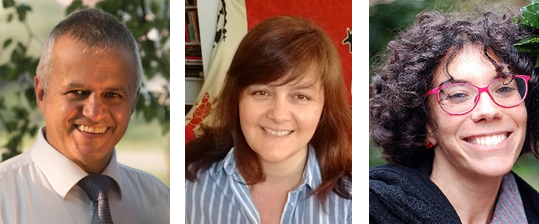 |
Flavio Maran (flavio.maran@unipd.it); Sabrina Antonello (sabrina.antonello@unipd.it); Sara Bonacchi (sara.bonacchi@unipd.it), Abhijit Nag (abhijit.nag@unipd.it)
The M.E.N. Group focuses on molecular aspects of electrochemical reactions and nanosystems, from both fundamental and applied viewpoints. Specific research topics include:
- Electron transfer through molecular bridges and interfaces;
- Dissociative electron transfer;
- Monolayer-protected clusters: electrochemical, optical and magnetic properties, redox catalysis, drug-delivery systems;
- Electrochemical sensors for cancer biomarkers and volatile chemicals;
- Self-assembled monolayers of conformationally constrained peptides.
The M.E.N. group is equipped with state-of-the-art electrochemical instrumentations, including electrogenerated chemiluminescence and SECM, STM and AFM, PM-IRRAS and UV-visible spectrometers, HPLC.
- Electrocrystallization of Monolayer Protected Gold Clusters: Opening the Door to Quality, Quantity and New Structures, J. Am. Chem. Soc., 2017, 139, 4168-4175.
- Magnetic Ordering in Gold Nanoclusters, ACS Omega, 2017, 2, 2607-2917.
- From Blue to Green: Fine Tuning of Photoluminescence and Electrochemiluminescence in Bifunctional Organic Dyes, J. Am. Chem. Soc., 2017, 139, 2060-2069.
- Molecular Electrochemistry of Monolayer-Protected Clusters, Curr. Opinion Electrochem., 2017, 2, 18-25.
- A Magnetic Look into the Protecting layer of Au25 Clusters, Chem. Sci., 2016, 7, 6910-6918.
Molecular Recognition and Catalysis
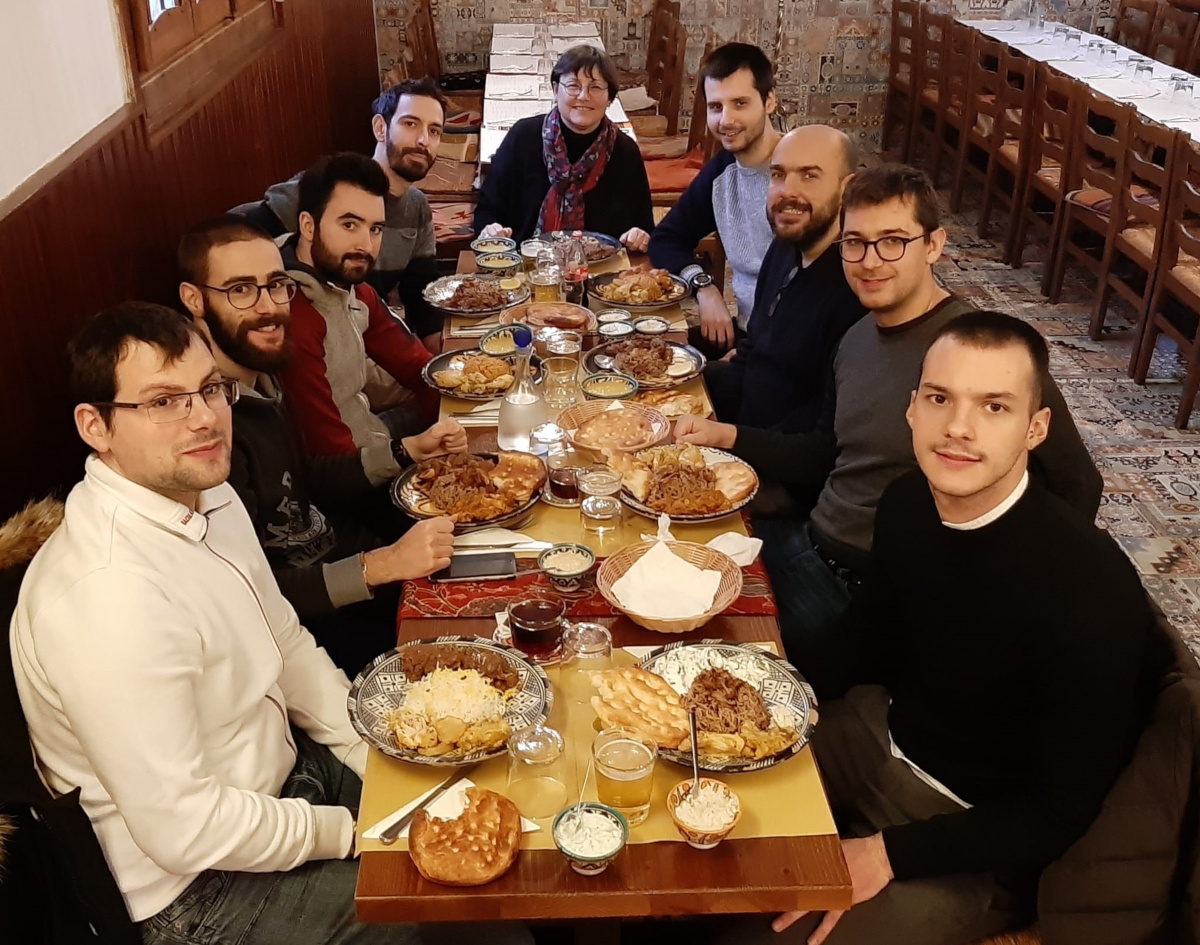
Giulia Licini (giulia.licini@unipd.it); Cristiano Zonta (cristiano.zonta@unipd.it); Manuel Orlandi ( manuel.orlandi@unipd.it).
The Molecular Recognition and Catalysis group is interested in all aspects of selective catalytic transformations and molecular recognition. Our research is centered on the design, discovery, and study of new catalytic systems that catalyze fundamentally useful organic reactions. These include, in particular Lewis Acid catalysis, oxidations, and new stereoselective transformations. In addition, we apply the tools of physical-organic chemistry tools to gain insights into the transition structure geometries and molecular recognition events that control reactivity and selectivity.
The following topics are currently under investigation in our laboratories:
1. Activation of Small Molecules (CO2, O2, H2O2); 2. Mimics of Physiologically Important Metallo-Enzymes (haloperoxidases, ligninperoxidases); 3. New Approaches to Catalyst Design and Recycling in Green Chemistry; 4. Self-Assembled Molecular Cages and Catalysis in Confined Spaces; 5. Probes for Enantiomeric Excess Determination; 6. Development of New Stereoselective C-C Bond Forming Reactions.
- Concentration-Independent Stereodynamic g-Probe for Chiroptical Enantiomeric Excess Determination, J. Am. Chem. Soc., 2017, 139, 15616–15619, DOI: 10.1021/jacs.7b09469.
- Triggering Assembly and Disassembly of a Supramolecular Cage, J. Am. Chem. Soc., 2017, 139, 6456–6460 DOI: 10.1021/jacs.7b02341.
- Vanadium(V) Catalysts with High Activity for the Coupling of Epoxides and CO2: Characterization of a Putative Catalytic Intermediate, ACS Catalysis, 2017, 7, 2367–2373, DOI: 10.1021/acscatal.7b00109.
– Efficient Vanadium-Catalyzed Aerobic C−C Bond Oxidative Cleavage of Vicinal Diols, Adv. Synth. Catal., 2018, 360, 3286-3296. DOI: 10.1002/adsc.201800050.
– A Diastereodynamic Probe Transducing Molecular Length into Chiroptical Readout, J. Am. Chem. Soc., 2019, 141, 11963-11969. DOI: 10.1021/jacs.9b04151.
Multi-functional Nanomaterials
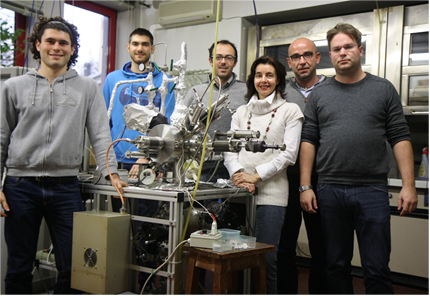 |
Chiara Maccato (chiara.maccato@unipd.it); Alberto Gasparotto
(alberto.gasparotto@unipd.it); Davide Barreca (davide.barreca@unipd.it).
The Multi-functional Nanomaterials Group has an internationally recognized know-how in the fabrication of inorganic nanoarchitectures (thin films, supported nanoparticles, nanowires, nanoplatelets,…) by chemical vapor deposition (CVD), plasma enhanced-CVD, and radio frequency-sputtering. Attention is also devoted to the synthesis of novel molecular precursors for CVD and PE-CVD processes.
The developed nanosystems are deeply characterized to unravel structure-property relationships and investigated for sustainable end-uses, encompassing photo-activated applications (H2 production by photocatalysis and photoelectrochemical water splitting, air/water purification, self-cleaning and anti-fogging systems), molecular detection of flammable/toxic gases, but also anodes for Li-ion batteries and magnetic materials.
- Surface functionalization of nanostructured Fe2O3 polymorphs: from design to light-activated applications, ACS Appl. Mater. Interfaces, 2013, 5, 7130-7138.
- Enhanced hydrogen production by photoreforming of renewable oxygenates through nanostructured Fe2O3 polymorphs, Adv. Funct. Mater., 2014, 24, 372-378.
- Pt-functionalized Fe2O3 Photoanodes for Solar Water Splitting: the Role of Hematite Nano-organization and Platinum Redox State, Phys. Chem. Chem. Phys., 2015, 17, 12899-12907.
- Advances in photocatalytic NOX abatement through the use of Fe2O3/TiO2 nanocomposites, RSC Adv., 2016, 6, 74878-74885.
- Vapor phase fabrication of nanoheterostructures based on ZnO for photoelectrochemical water splitting, Adv. Mater. Interfaces, 2017, 4, 1700161-1 1700161-9.
Nano & Molecular Catalysis
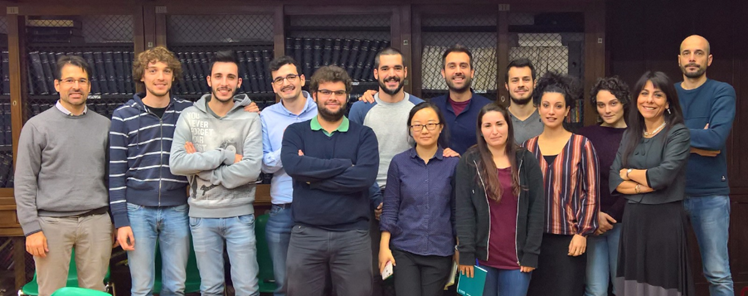 |
Marcella Bonchio (marcella.bonchio@unipd.it); Mauro Carraro
(mauro.carraro@unipd.it); Andrea Sartorel (andrea.sartorel@unipd.it); Luca
Dell’Amico (luca.dellamico@unipd.it); Giacomo Saielli (giacomo.saielli@unipd.it); Paolo Costa (paolo.costa@unipd.it); Francesco Rigodanza (francesco.rigodanza@unipd.it); Daniele Mazzarella (daniele.mazzarella@unipd.it); Giulio Goti (giulio.goti@unipd.it); Katy Elizabeth Medrano Uribe (katyelizabeth.medranouribe@unipd.it);
The group has established a highly interdisciplinary activity on the study of novel bio-inspired catalytic systems, molecular materials and functional hybrid architectures. Main topics include: (i) artificial photosynthesis: development of multi-redox routines powered by light irradiation for water splitting, CO2 fixation and stereoselective light-driven reactions for the synthesis of biologically relevant molecules with application to flow photochemistry; (ii) design of synthetic enzymes (synzymes), bio-conjugate nanomaterials and hybrid membranes for the interaction with diverse biological targets involved in ROS-related diseases, with applications in catalysis and nanomedicine; (iii) computational modeling in collaboration with ITM-CNR: DFT calculations of spectroscopic properties of organic and organometallic systems and MD simulations of ionic liquids and ionic liquid crystals.
- Hydrogen Evolution by FeIII Molecular Electrocatalysts Interconverting between Mono and Di-Nuclear Structures in Aqueous Phase, ChemSusChem, 2017, 10, 4430–4435.
- Photo-assisted water oxidation by high-nuclearity cobalt-oxo cores: tracing the catalyst fate during oxygen evolution turnover, Green Chem., 2017, 19, 2416-2426.
- Merged Heme and Non-Heme Manganese Cofactors for a Dual Antioxidant Surveillance in Photosynthetic Organisms, ACS Catal., 2017, 7, 1971-1976.
- Tuning Iridium Photocatalysts and Light Irradiation for Enhanced CO2 reduction, ACS Catal., 2017, 7, 154-160.
- Dynamic Anti-Fouling of Catalytic Pores Armed with Oxygenic Polyoxometalates, Adv. Mater. Interfaces, 2015, 2, 1500034-1500034.
Physical Chemistry of Nano and Organometallic Materials
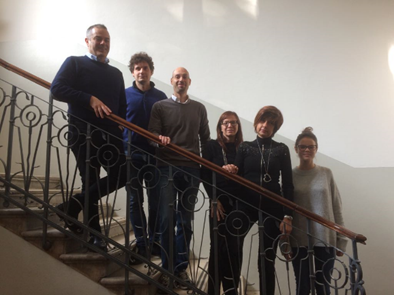 |
Saverio Santi (saverio.santi@unipd.it); Vincenzo Amendola (vincenzo.amendola@unipd.it)
PHYNOM members investigate the synthesis, properties and applications of nano and organometallic materials. PHYNOM is organized in two units.
The research of the Physical Organometallic Chemistry unit is aimed at the spectroelectrochemical study of the optical and redox properties of ad hoc synthetized (multi)ferrocenyl systems in which the metal-to-metal charge transfer is mediated by different organic backbones, such as peptides, aromatic polycycles and photochromic molecules.
The Laser Assisted Synthesis and Plasmonics unit focuses on laser generation of colloids to produce plasmonic and other multifunctional nanoparticles for photonics, sensor science, nanomedicine, catalysis and related fields. Mechanistic aspects of laser synthesis in liquids, which include laser ablation, laser fragmentation and laser melting, are also investigated.
- A quarter-century of nanoparticle generation by lasers in liquids: Where are we now, and what’s next?, J. Coll. Interf. Sci., 2017, 489, 1-2.
- Benzodithiophene and Benzotrithiophene as π-Cores for Two- and Three-Blade Propeller-Shaped Ferrocenyl-Based Conjugated Systems, Eur. J. Org. Chem., 2017, 5966-5974.
- Hydrogen-Bond-Assisted, Concentration-Dependent Molecular Dimerization of Ferrocenyl Hydantoins, Organometallics, 2017, 36, 2190-2197.
- Surface plasmon resonance in gold nanoparticles: a review, J. Phys.: Condens. Matter, 2017, 29, 203002.
- Enhanced Electrocatalytic Oxygen Evolution in Au–Fe Nanoalloys, Angew. Chem. Int. Ed., 2017, 56, 6589-6593.
Polymeric Materials for Advanced Catalysis
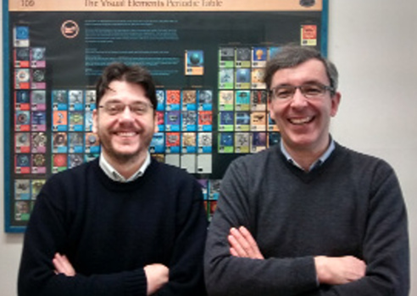 |
Marco Zecca (marco.zecca@unipd.it), Paolo Centomo (paolo.centomo@unipd.it)
The PoMACat investigates on cross-linked resins of different texture and on microgels as catalytic materials. Our research includes:
- tuning of hydro- and lipophilicity of polymeric materials to solvent or substrate compatibility in catalytic reactions;
- solid acid and bifunctional catalysts for the production and transformation of biorefinery platform substances;
- supported metal catalysts for the direct synthesis of hydrogen peroxide and oxidation of alcohols;
- development of “in-operando” methods of XAFS characterization of solid catalysts under (gas)-liquid-solid conditions.
- Influence of Metal Precursors and Reduction Protocols on the Chloride-Free Preparation of Catalysts for the Direct Synthesis of Hydrogen Peroxide without Selectivity Enhancers, ChemCatChem, 2016, 8, 1564–1574.
- The distinct role of the flexible polymer matrix in catalytic conversions over immobilised nanoparticles, RSC Advances, 2015, 5, 56181–56188.
- In Situ X-ray Absorption Fine Structure Spectroscopy of a Palladium Catalyst for the Direct Synthesis of Hydrogen Peroxide: Leaching and Reduction of the Metal Phase in the Presence of Bromide Ions, ChemCatChem, 2015, 7, 3712–3718.
- Dry- and swollen-state morphology of novel high surface area polymers, Microporous and Mesoporous Materials, 2014, 185, 26–29.
- Resin-Based Catalysts for the Hydrogenolysis of Glycerol to Propylene Glycol, Top. Catal., 2013, 56, 822–830.
Supramolecular Nanochemistry and Advanced
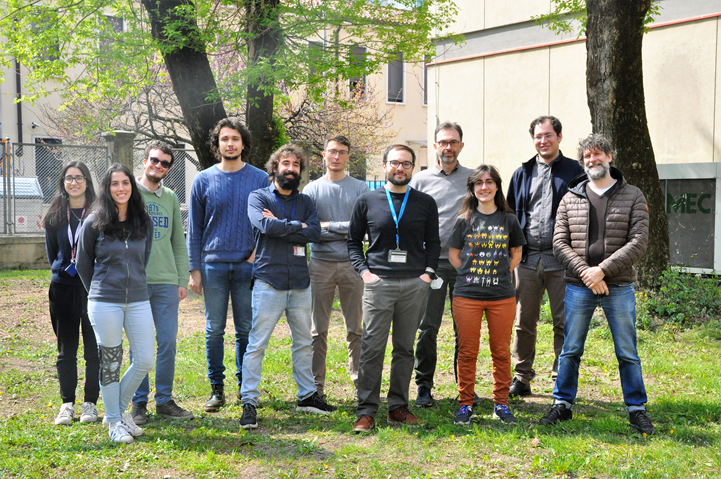
Fabrizio Mancin (fabrizio.mancin@unipd.it); Federico Rastrelli (federico.rastrelli@unipd.it)
The research activity of the group is focused on the development of self-organized nanosystems for molecular recognition and innovative NMR methods for their structural investigation. Monolayer-protected gold, silica and polylipoic nanoparticles are the key scaffolds of our systems. We demonstrated how self-organization of these nanoparticles can be exploited for cooperative catalysis, sensing and drug delivery. The most relevant application is the NMR detection of analytes: using tailor-made receptor nanoparticles and custom NMR sequences we demonstrated the possibility to extract the 1H spectrum of the target molecules from that of the whole mixture even at micromolar concentrations. Other fields explored include pH2 hyperpolarization, food analysis, the study of nano-bio interactions, photonic nanohybrids. The group is supported by EU (MSCA-ITN), CARIPARO, AIRC.
- “On the Metal-Aided Catalytic Mechanism for Phosphodiester Bond Cleavage Performed by Nanozymes” ACS Catalysis, 2021, 11, 8736-8748.
- “Hybrid nanoreceptors for high sensitivity detection of small molecules by NMR chemosensing” Chem. Commun. 2021, 57, 3002-3005.
- “Host-Guest Allosteric Control of an Artificial Phosphatase” J. Am. Chem. Soc., 2020, 142, 6837-6841.
- “Nanoparticle-assisted NMR spectroscopy: Enhanced detection of analytes by water mediated saturation transfer” J. Am. Chem. Soc., 2019, 141, 4870–4877.
- "Molecular-Dynamics-Simulation-Directed Rational Design of Nanoreceptors with Targeted Affinity" Angew. Chem.-Int. Edit., 2019, 58, 7702-7707.
Updated April 26th, 2022
Surface Supramolecular Chemistry
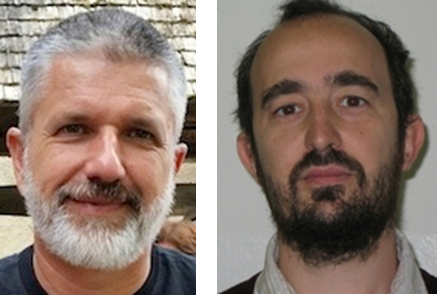
Mauro Sambi (mauro.sambi@unipd.it), Francesco Sedona (francesco.sedona@unipd.it)
The SSC Group’s research activities deal with the thermo- and photoinduced on-surface synthesis of 2D materials starting from supramolecular assemblies of functionalized precursors, with a particular emphasis on the preservation of a high degree of long-range order throughout the process. The group manages an ultra-high vacuum chamber equipped with scanning tunneling microscopy (STM) and other surface science tools, interfaced with both single-wavelength and tunable laser sources for in-vacuum surface photochemistry with molecular resolution. An ambient STM/AFM instrument for solid/liquid and solid/air investigations complements the available equipment. The group has ongoing collaborations with several Italian and European groups active in the field of on-surface synthesis and molecular magnetism.
- Metal-Free on-Surface Photochemical Homocoupling of Terminal Alkynes, J. Am. Chem. Soc., 2016, 138, 10151-10156.
- Tunable Band Alignment with Unperturbed Carrier Mobility of On-Surface Synthesized Organic Semiconducting Wires, ACS Nano, 2016, 10, 2644-2651.
- Molecules–Oligomers–Nanowires–Graphene Nanoribbons: A Bottom-Up Stepwise On-Surface Covalent Synthesis Preserving Long-Range Order, J. Am. Chem. Soc., 2015, 137, 1802-1808. (WOS highly cited paper)
- Stereoselective Photopolymerization of Tetraphenylporphyrin Derivatives on Ag(110) at the Sub-Monolayer Level, Chem. Eur. J., 2014, 20, 14296-14304. (Hot Paper, Back Cover).
- Tuning the catalytic activity of Ag(110)-supported Fe phthalocyanine in the oxygen reduction reaction, Nat. Mater., 2012, 11, 970-977.
Synthetic Photocatalysis, Design and Mechanisms
The research group interests spans within the fields of organic synthesis and catalysis, and photochemistry. We solve complex synthetic problems in a sustainable manner, merging light with homogeneous/heterogeneous catalysis. Our main expertise include the design and synthesis of novel organic photocatalysts (J. Am. Chem. Soc. 2023, 145, 3, 1835–1846), well as the investigation of the reaction mechanism that allow access to previously unexplored reactivity (Chem. Sci. 2024, 15, 271).
Prof. Luca Dell’Amico (luca@unipd.it); Dr Giulio Goti (giulio.goti@unipd.it); Dr Daniele
Mazzarella (daniele.mazzarella@unipd.it); Dr Katy Medrano
(katyelizabeth.medranouribe@unipd.it)
The activity of the group focuses on different research topics:
1) The design, synthesis, and characterization of novel organic
photocatalysts, and their utilization in innovative light-driven processes.
2) The development of novel sustainable synthetic methods, involving the
use of organocatalysis, photocatalysis, and flow chemistry to access
important biologically active compounds and key structural building
blocks.
3) The study and elucidation of complex light-driven transformations by
means of in-situ NMR, laser flash photolysis, as well as DFT analysis.
The group is supported by EU with the ERC Starting Grant SYNPHOCAT,
several MSCA Actions, PRIN and PNRR Young Researchers program.
1. “The Rational Design of Reducing Organophotoredox Catalysts Unlocks Proton-Coupled
Electron-Transfer and Atom Transfer Radical Polymerization Mechanisms” J. Am. Chem. Soc.
2023, 145, 1835–1846.
2. “Unveiling the impact of the light-source and steric factors on [2+2] heterocycloaddition
reactions” Nat. Synth., 2023, 2, 26–36.
3. “A General Organophotoredox Strategy to Difluoroalkyl Bicycloalkane (CF2-BCA) Hybrid
Bioisosteres” Angew. Chem. Int. Ed. 2023, 135, e2023035.
4. “A Rational Approach to Organo‐Photocatalysis. Novel Designs and Structure‐Property‐
Relationships” Angew. Chem. Int. Ed. 2021, 133, 1096-1111.
5. " Mechanisms and Synthetic Strategies in Visible-Light-Driven [2+2]-Heterocycloadditions "
Angew. Chem. Int. Edit., 2023, 62, e202217210.
Group Website: https://dellamicogroup.com/
Systems Chemistry
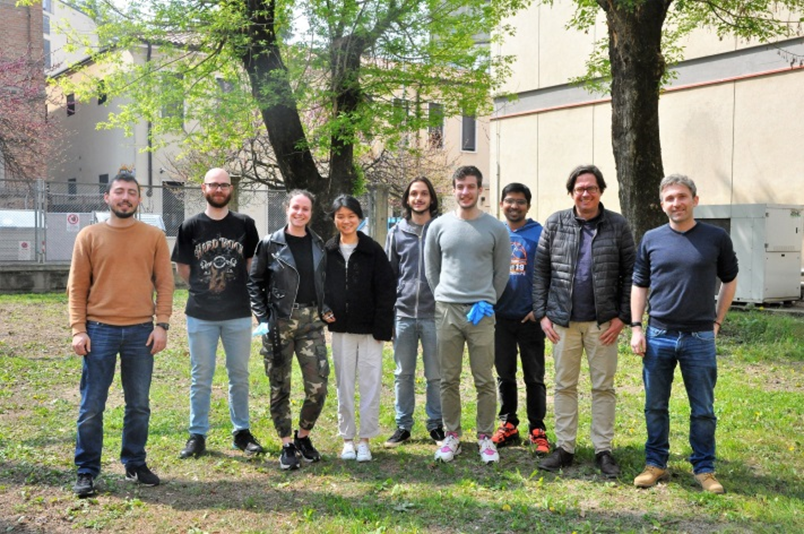
Prof. Leonard Prins (leonard.prins@unipd.it); Dr. Luca Gabrielli (luca.gabrielli@unipd.it); Dr. Haridas Kar (haridas.kar@unipd.it)
Systems chemistry aims at understanding how properties emerge from complex chemical systems. Chemists have so far approached the understanding of biology by reducing complex events to simple reactions and interactions. However, despite decades of intense biomimetic research, it is currently still unclear which conditions are required for a mixture of chemicals to become ‘alive’ and acquire the ability to grow, communicate, move, evolve, etc... The key point is that these so-called emerging properties cannot be traced back to a single molecule, but are the product of an ensemble of molecules. Systems chemistry is considered the third wave in the evolution of chemistry after the discovery of covalent and noncovalent bond-formation. The capacity to understand the chemical origin of life will permit the development of intelligent materials with ‘life-like’ properties.
References:
- Das, K.; Gabrielli, L.; Prins, L.J. Chemically fueled self-assembly in biology and chemistry, Angew. Chem. Int. Ed. 2021, 60, 20120-20143.
- Rosa-Gastaldo, D.; Pečiukėnas, V.; Hunter, C.A.; Gabrielli, L. Duplex vs. folding: tuning the self-assembly of synthetic recognition-encoded aniline oligomers Org. Biomol. Chem. 2021, 19, 8947-8954.
- Gabrielli, L.; Hunter, C.A. Supramolecular catalysis by recognition-encoded oligomers: discovery of a synthetic imine polymerase Chem. Sci. 2020, 11, 7409-7414.
- Chen, R.; Neri, S.; Prins, L.J. Enhanced catalytic activity under non-equilibrium conditions, Nat. Nanotechnol. 2020, 15, 868-874.
- Ragazzon, G.; Prins, L.J. Energy consumption in chemical fuel-driven self-assembly, Nat. Nanotechnol. 2018, 13, 882-889.
Updated Apri 26th, 2022
Wet Chemistry and Colloids Group
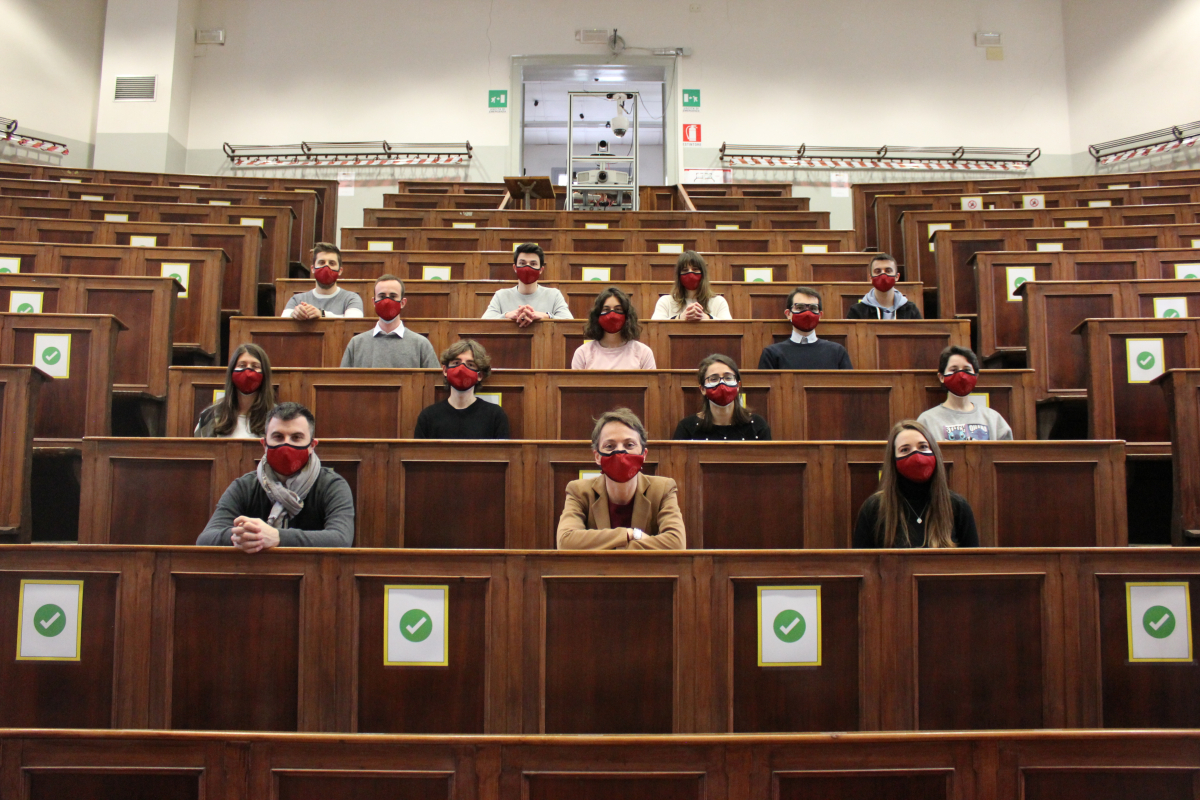
Prof. Silvia Gross (silvia.gross@unipd.it); Dr. Francesco Lamberti (francesco.lamberti@unipd.it)
The group research activities focus on metal oxocluster-reinforced organic-inorganic hybrid materials, low temperature hydrothermal synthesis of nanocrystalline transition metal oxides and sulphides in an aqueous environment, nucleation and growth from optimised colloidal suspensions, inorganic chemistry in a nanoreactor with room temperature miniemulsion approach to crystalline inorganic nanostructures, Crystallisation of small and monodispersed nanoparticles via microfluidics, surface chemistry and functionalisation, structural and spectroscopic characterisation of inorganic nanostructures and Structural and spectroscopic characterisation of inorganic nanostructures.
The laboratory facilites include two fully equipped laboratories for inorganic, molecular and colloidal synthesis
- Schlenk lines for the synthesis of highly air-sensitive inorganic and metalorganic compounds;
- A complete equipment for hydrothermal synthesis or the preparation of inorganic materials under non-conventional conditionsConventional Memmert UNE-400 for hydrothermal synthesis;
- Ball miller Retsch MM200 for the milling/grinding of samples and for mechanosynthesis, up to 60 Hz;
- Centrifuge Hermle Z366: Universal table top centrifuge;
- UV lamps Helios Italquartz 125 W and 400 W, for UV-activated reactions (e.g. polymerization processes);
- Sonicator Laborsonic P Sartorius Stedim ultrasonicator for the homogeneization of miniemulsions;
- Custom made spin, dip and spray coaters ror the deposition of inorganic and hybrid films and coatings;
The lab is also equipped with an ultrasonic spraying system that allows the fabrication of thin and uniform films for different applications. The spray gun can process both liquid and colloidal solutions creating micrometric drops on the surface. Furthermore, the deposition is performed in a dedicated climate chamber and, optionally, the sample can be heated up to 500 degrees by a precise titanium hotplate.


